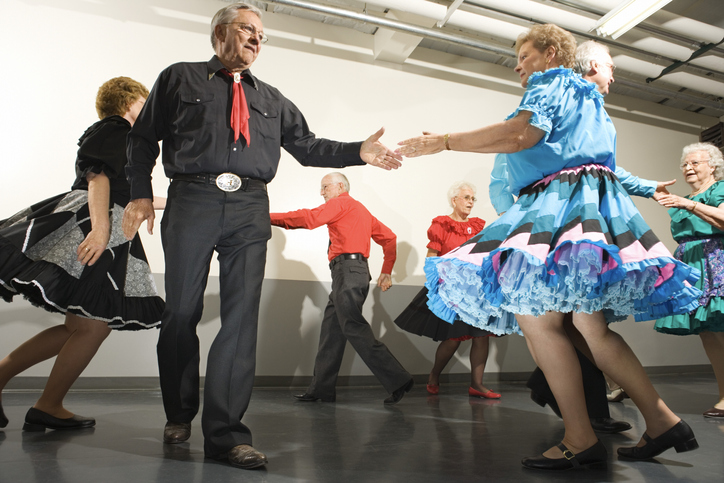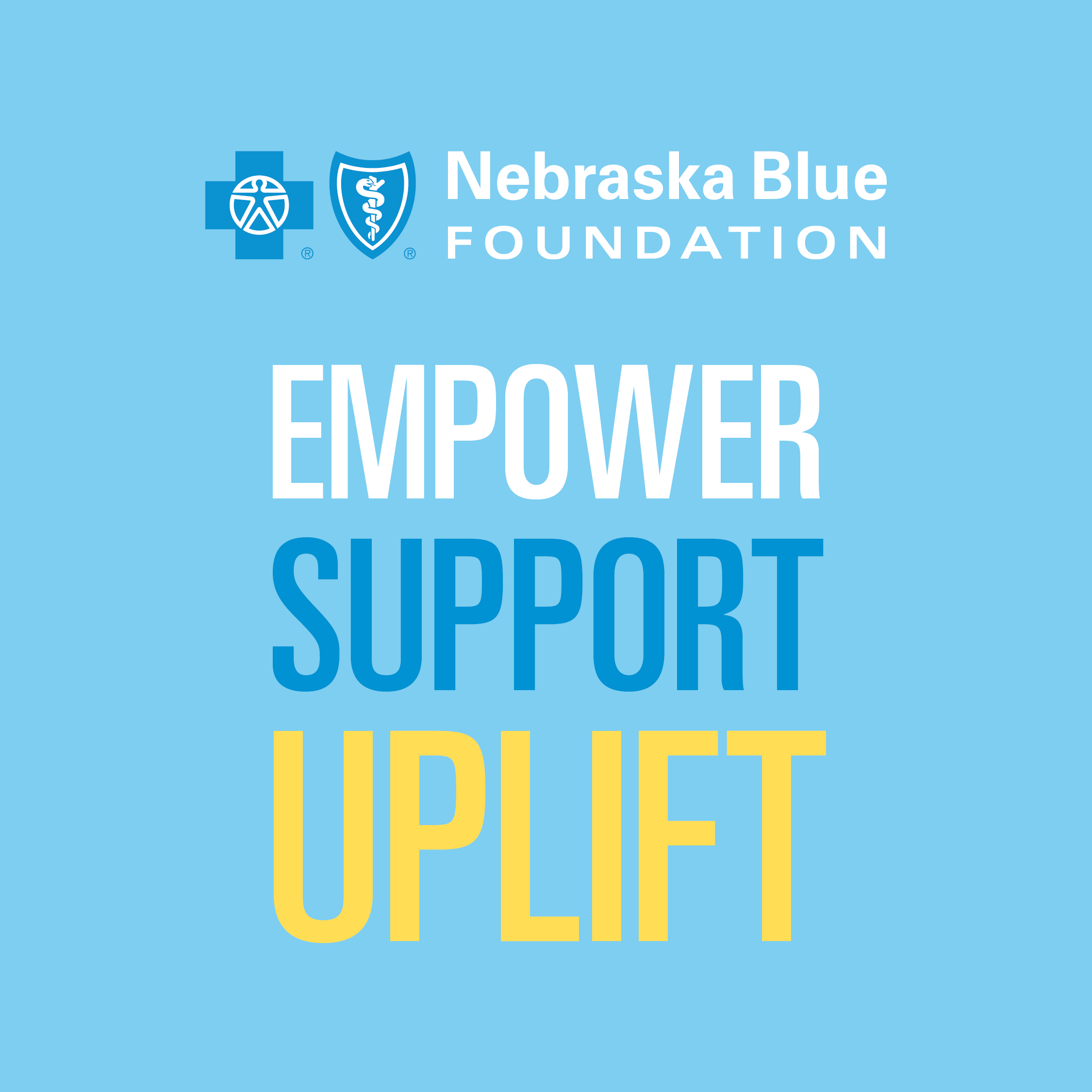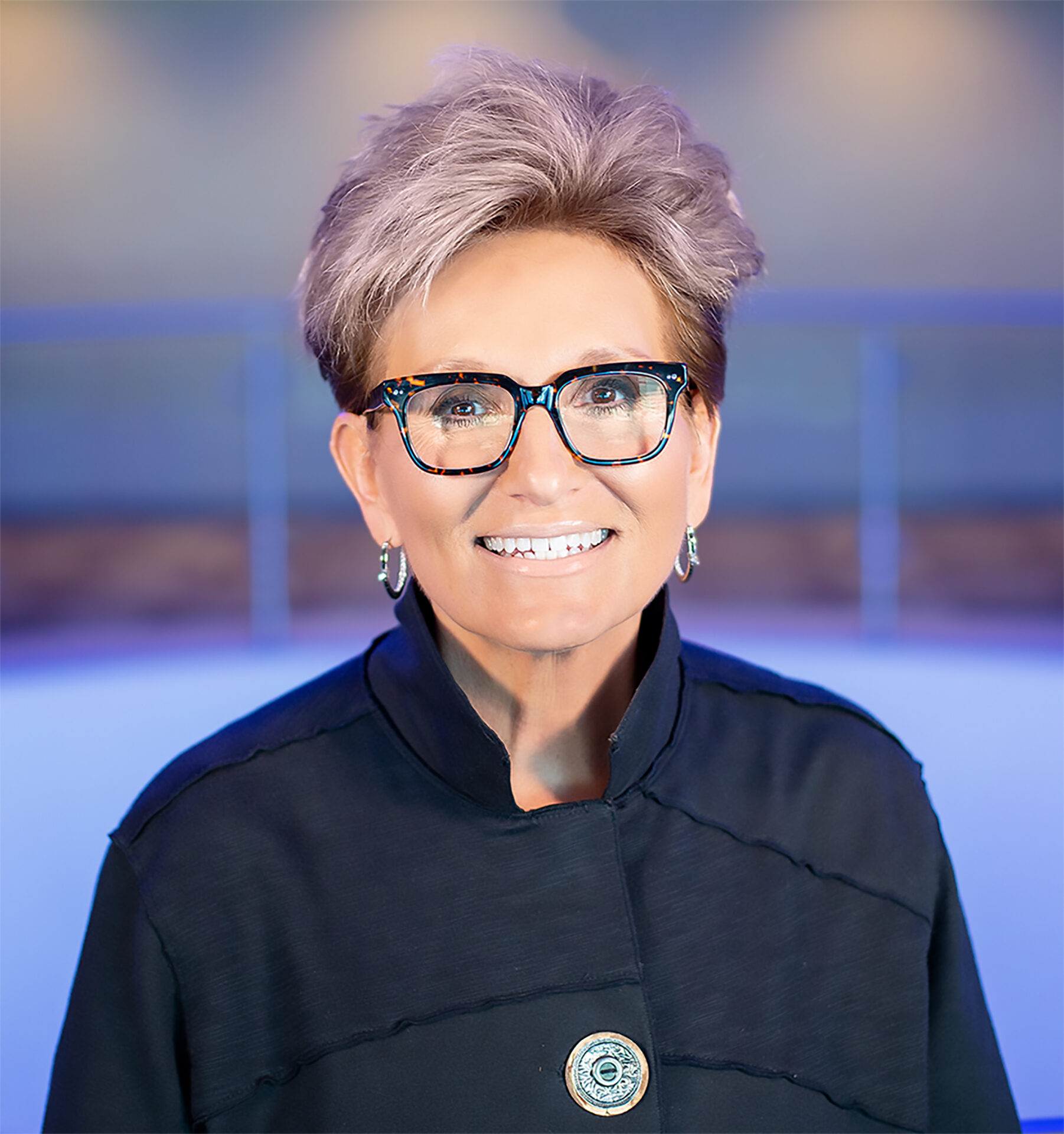Debbie Carlson, 67, says she was hooked instantly – ever since that first allemande left and do-si-do six years ago.
“I found out about it from a member of a church group. Her square dance club was starting a session of lessons so I went to check it out,” Carlson says.
Now, she is fully immersed in Omaha’s square-dancing scene, an active advocate eager to promote the benefits of partnering up and promenading.
“Dancers make lifelong friends,” Carlson says. “We have dancers in the Omaha clubs from age 7 to 87, and everyone dances together. It’s a multi-generational, team-building activity.”
Social and fun, it’s also good for the body. Square dancing (sometimes described as “fast, choreographed walking”) – and dancing in general – can lead to a whirl of health benefits. Among them: weight loss (depending on dance intensity and duration), improved balance and blood flow, stress relief and stronger weight-bearing bones.
“Square dancers get their heart rates up and definitely perspire,” Carlson says. “Those who wear step-counting devices usually log 6,000 to 7,000 steps per dance.”
Michelle Reilly has a passion for dancing and the well-being of dancers. An assistant professor in the department of physical therapy at Creighton University, she is a longtime physical therapist for American Midwest Ballet and touring dance companies in the metro area.
In addition to more traditional forms of dancing, she says a dance fitness workout can be a sound exercise alternative, especially if other fitness choices seem boring or repetitive.
“Dance fitness usually involves an element of community — other people doing the same thing at the same time tends to make you feel more accountable — as well as an element of fun. The music and movement combination can be really motivating,” Reilly says.
Popular dance fitness classes — all of which are available at gyms and centers throughout the greater Omaha area — include:
• Zumba Gold: A modified, lower-intensity Zumba class (dance, aerobic movements and energetic music) recommended for active, older adults.
• Jazzercise: Dance fitness for all ages and fitness levels.
• Barre workouts: Traditionally, a combination of yoga, Pilates and ballet movements performed on a dance barre.
“Dance fitness has a lot to offer in addition to ‘traditional’ exercise benefits,” Reilly says. “It definitely challenges static and dynamic balance, which can help with prevention of falls. There are challenges to coordination (being able to use upper and lower extremities to do different things at the same time) that isn’t necessarily present with other forms of exercise.”
She adds, “The cognitive challenge shouldn’t be overlooked either. Remembering what each movement entails and the sequencing of those movements provides not only a physical workout, but a mental workout as well.”
Carlson, who is a member of the Omaha Square Dance Board, stresses that mental aspect as well: “Research shows that learning the calls and being able to recall and execute them when required strengthens the neural pathways in the brain, which improves memory.”
Carlson’s devotion to dancing extends beyond the square. She also swing dances and ballroom dances, and she is learning country line dancing: “I ordered my first pair of real cowboy boots. I am super excited about that.”
If you’re interested in giving square dancing a twirl, the Omaha Square Dance Board hosts 90-minute beginner “parties.” For more information about those events, lessons and dances, visit squaredanceomaha.org.
Tips for starting out
Physical therapist Michelle Reilly offers this advice for dance fitness newbies:
• Start slow, listen to your body and gradually increase your intensity.
• Watch out for any new or unusual symptoms and be honest with the class leader about your experience and comfort levels.
• Consult a health care provider for guidance if you are concerned about your ability to complete a dance fitness class. But the risks, she says, are generally low.






